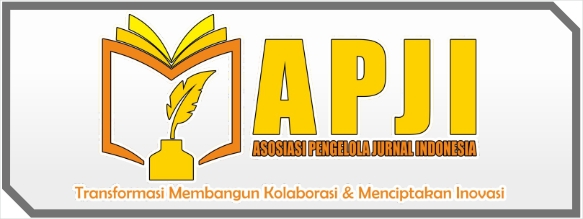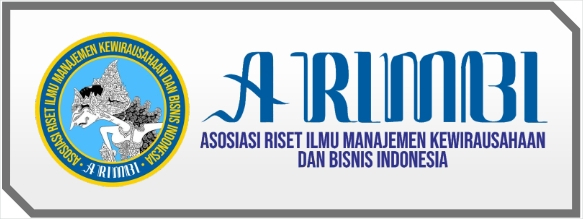Pengaruh Kredibilitas dan Karakteristik Opinion Leader terhadap Behavioral Intention Konsumen pada Media Sosial Instagram
DOI:
https://doi.org/10.30588/jmp.v10i2.704Keywords:
Behavioral intention, Instagram, Opinion leadership, Source credibility, Source characteristicAbstract
This study aims to determine the effect of the information source’s credibility and characteristic towards opinion leadership, and the effect of opinion leadership on consumer behavioral intention in social media Instagram. The population in this study were all social media users who use Instagram as their fashion reference. The total sample used in this study was 168 people. The sampling method used in this research is purposive sampling. The result obtained from this study indicates that credibility and characteristic have a significant and positive effect on opinion leadership, and opinion leadership has a significant and positive effect on the intention to interact and intention to follow the advice.References
Aragoncillo, L., & Orus, C. (2018). Impulse Buying Behaviour: An Online-offline Comparative and the Impact of Social Media. Spanish Journal of Marketing - ESIC, 22(1), 42–62. https://doi.org/10.1108/sjme-03-2018-007.
Brettel, M., Reich, J.-C., Gavilanes, J. M., & Flatten, T. C. (2015). What Drives Advertising Success on Facebook? An Advertising-Effectiveness Model. Journal of Advertising Research, 55(2), 162–175. https://doi.org/10.2501/jar-55-2-162-175.
Casaló, L. V., Flavián, C., Guinalíu, M., & Ekinci, Y. (2015). Avoiding the Dark Side of Positive Online Consumer Reviews: Enhancing Reviews’ Usefulness for High Risk-averse Travelers. Journal of Business Research, 68(9), 1829–1835. https://doi.org/10.1016/j.jbusres.2015.01.010.
Casaló, L. V., Flavián, C., & Ibáñez-Sánchez, S. (2017). Antecedents of Consumer Intention to Follow and Recommend an Instagram Account. Online Information Review, 41(7), 1046–1063. https://doi.org/https://doi.org/10.1108/OIR-09-2016-0253.
Casaló, L. V., Flavián, C., & Ibáñez-Sánchez, S. (2018). Influencers on Instagram: Antecedents and Consequences of Opinion Leadership. Journal of Business Research, 117, 510–519. https://doi.org/10.1016/j.jbusres.2018.07.005.
Chaplin, J. P. (2011). Kamus Lengkap Psikologi. Jakarta: Rajagrafindo Persada.
Chen, S. C., & Lin, C. P. (2018). Understanding the Effect of Social Media Marketing Activities: The Mediation of Social Identification, Perceived Value, and Satisfaction. Technological Forecasting and Social Change, 140(December 2018), 22–32. https://doi.org/10.1016/j.techfore.2018.11.025.
Clow, K. E., & Baack, D. (2018). Integrated Advertising, Promotion, and Marketing Communications. 8th Edition. New York: Pearson, Inc.
De Vries, N. J., & Carlson, J. (2014). Examining the Drivers and Brand Performance Implications of Customer Engagement with Brands in the Social Media Environment. Journal of Brand Management, 21(6), 495–515. https://doi.org/10.1057/bm.2014.18.
Djafarova, E., & Rushworth, C. (2017). Exploring the Credibility of Online Celebrities' Instagram Profiles in Influencing the Purchase Decisions of Young Female Users. Computers in Human Behavior, 68, 1–7.
Gallagher, K. (2019). The Influencer Marketing Report: Research, Strategy & Platforms for Leveraging Social Media Influencers. Diakses tanggal 10 Mei 2020 pada https://www.businessinsider.in/the-influencer-marketing-report-research-strategy-platforms-for-leveraging-social-media-influencers/articleshow/70123958.cms.
Goldsmith, R. E., & Clark, R. A. (2008). An Analysis of Factors Affecting Fashion Opinion Leadership and Fashion Opinion Seeking. Journal of Fashion Marketing and Management: An International Journal, 12(3), 308–322. https://doi.org/10.1108/13612020810889272.
Hennig-Thurau, T., Skiera, B., Rangaswamy, A., Malthouse, E. C., Gensler, S., Lobschat, L., & Friege, C. (2010). The Impact of New Media on Customer Relationships. Journal of Service Research, 13(3), 311–330. https://doi.org/10.1177/1094670510375460.
Hwang, K., & Zhang, Q. (2018). Influence of Parasocial Relationship between Digital Celebrities and their Followers on Followers’ Purchase and Electronic Word-of-mouth Intentions, and Persuasion Knowledge. Computers in Human Behavior, 87(May), 155–173. https://doi.org/10.1016/j.chb.2018.05.029.
iBig Academy (2019). Apa itu Selebgram? Ini Dia Asal Usulnya. Diakses tanggal 18 November 2020 pada https://www.ibigacademy.com/apa-itu-selebgram-asal-usul-endorse.
Ismagilova, E., Slade, E., Rana, N. P., & Dwivedi, Y. K. (2020). The Effect of Characteristics of Source Credibility on Consumer Behaviour: A Meta-analysis. Journal of Retailing and Consumer Services, 53, 1203-1226. https://doi.org/10.1016/j.jretconser.2019.01.005.
Jin, S. A. A., & Phua, J. (2014). Following Celebrities’ Tweets about Brands: The Impact of Twitter-based Electronic Word-of-mouth on Consumers Source Credibility Perception, Buying Intention, and Social Identification with Celebrities. Journal of Advertising, 43(2), 181–195. https://doi.org/10.1080/00913367.2013.827606.
Kemp, S. (2018). Digital in 2018: World’s Internet Users Pass the 4 Billion Mark. Diakses tanggal 16 Mei 2020 pada https://wearesocial.com/blog/2018/01/global-digital-report-2018.
Kim, J. E., Lloyd, S., & Cervellon, M. C. (2016). Narrative-transportation Storylines in Luxury Brand Advertising: Motivating Consumer Engagement. Journal of Business Research, 69(1), 304–313. https://doi.org/10.1016/j.jbusres.2015.08.002.
Kirvesmies, T. (2018). Parasocial Relationships between Gen Z and Social Media Endorsers. University of Tampere.
Leal, G. P. A., Hor-Meyll, L. F., & Pessôa, L. A. G. de P. (2014). Influence of Virtual Communities in Purchasing Decisions: The Participants’ Perspective. Journal of Business Research, 67(5), 882–890. https://doi.org/10.1016/j.jbusres.2013.07.007.
Lin, C. A., & Kim, T. (2016). Predicting User Response to Sponsored Advertising on Social Media via the Technology Acceptance Model. Computers in Human Behavior, 64, 710–718. https://doi.org/10.1016/j.chb.2016.07.027.
Maslach, C., Santee, R. T., & Stapp, J. (1985). Individuation: Conceptual Analysis and Assessment. Journal of Personality and Social Psychology, 49(3), 729–738.
McCracken, G. (1989). Who Is the Celebrity Endorser? Cultural Foundations of the Endorsement Process. Journal of Consumer Research, 16(December), 310–321.
Mefita, S., & Yulianto, M. (2018). Fenomena Gaya Hidup Selebgram (Studi Fenomenologi Selebgram Awkarin). Interaksi Online, 6(4), 567–573.
Park, C. S. (2013). Does Twitter Motivate Involvement in Politics? Tweeting, Opinion Leadership, and Political Engagement. Computers in Human Behavior, 29(4), 1641–1648. https://doi.org/10.1016/j.chb.2013.01.044.
Raggatt, M., Wright, C. J. C., Carrotte, E., Jenkinson, R., Mulgrew, K., Prichard, I., & Lim, M. S. C. (2018). “I aspire to look and feel healthy like the posts convey”: Engagement with Fitness Inspiration on Social Media and Perceptions of Its Influence on Health and Wellbeing. BMC Public Health, 18, 1–11. https://doi.org/10.1186/s12889-018-5930-7.
Rahman, S. U., Ali, T., Saleem, S., Khan, M. A., & Akhtar, S. (2014). Consumers’ Adoption of Apparel Fashion: The Role of Innovativeness, Involvement, and Social Values. International Journal of Marketing Studies, 6(3), 49–64. https://doi.org/10.5539/ijms.v6n3p49.
Rogers, E. M., & Cartano, D. G. (1962). Methods of Measuring Opinion Leadership. Public Opinion Quarterly, 26(3), 435–441.
Sakinah, S. (2018). Selebgram: Meraih Popularitas melalui Dunia Maya. Etnosia: Jurnal Etnografi Indonesia, 3(1), 48–71.
Santoso, S. (2018). Menguasai Statistik dengan SPSS 25. Jakarta: PT Elex Media Komputindo.
Smith, T., Coyle, J. R., Lightfoot, E., & Scott, A. (2007). Reconsidering Models of Influence: The Relationship between Consumer Social Networks and Word-of-Mouth Effectiveness. Journal of Advertising Research, 47(4), 387–397. https://doi.org/10.2501/s0021849907070407.
Sugiyono, S. (2010). Metode Penelitian Pendidikan Pendekatan Kuantitatif, Kualitatif, dan R&D. Bandung: Alfabeta.
Thakur, R., Angriawan, A., & Summey, J. H. (2015). Technological Opinion Leadership: The Role of Personal Innovativeness, Gadget Love, and Technological Innovativeness. Journal of Business Research, 69, 2764–2773. https://doi.org/10.1016/j.jbusres.2015.11.012.
Tsang, M. M., Ho, S., & Liang, T. (2004). Consumer Attitudes Toward Mobile Advertising: An Empirical Study Consumer Attitudes toward Mobile Advertising. International Journal of Electronic Commerce, 8(3), 65–78. https://doi.org/10.1080/10864415.2004.11044301.
Wiedmann, K. P., Hennigs, N., & Langner, S. (2010). Spreading the word of fashion: Identifying social influencers in fashion marketing. Journal of Global Fashion Marketing, 1(3), 142–153. https://doi.org/10.1080/20932685.2010.10593066
Wood, N. T., & Burkhalter, J. N. (2014). Tweet This, Not That: A Comparison between Brand Promotions in Microblogging Environments Using Celebrity and Company-generated Tweets. Journal of Marketing Communications, 20(1–2), 129–146. https://doi.org/10.1080/13527266.2013.797784.
Zhao, Y., Kou, G., Peng, Y., & Chen, Y. (2018). Understanding Influence Power of Opinion Leaders in E-commerce Networks: An Opinion Dynamics Theory Perspective. Information Sciences, 426, 131–147. https://doi.org/10.1016/j.ins.2017.10.031.
Downloads
Published
How to Cite
Issue
Section
License
Authors who publish with Jurnal Maksipreneur agree to the following terms:
Authors retain copyright and grant the Jurnal Maksipreneur right of first publication with the work simultaneously licensed under a Creative Commons Attribution 4.0 International License that allows others to share (copy and redistribute the material in any medium or format) and adapt (remix, transform, and build upon the material) the work for any purpose, even commercially with an acknowledgment of the work's authorship and initial publication in Jurnal Maksipreneur.
Authors are able to enter into separate, additional contractual arrangements for the non-exclusive distribution of the journal's published version of the work (e.g., post it to an institutional repository or publish it in a book), with an acknowledgment of its initial publication in Jurnal Maksipreneur. Authors are permitted and encouraged to post their work online (e.g., in institutional repositories or on their website) prior to and during the submission process, as it can lead to productive exchanges, as well as earlier and greater citation of published work (See The Effect of Open Access).























